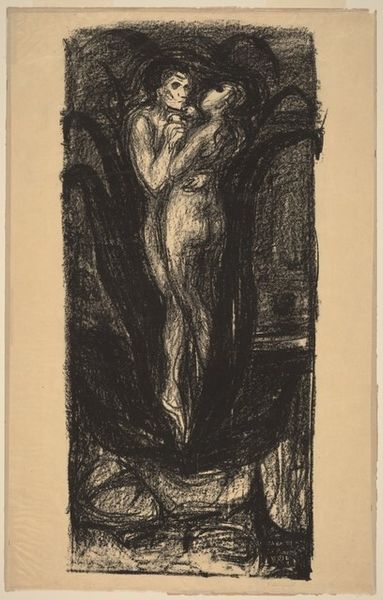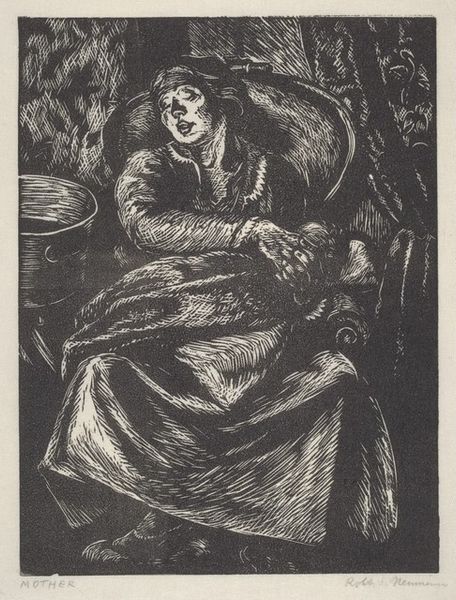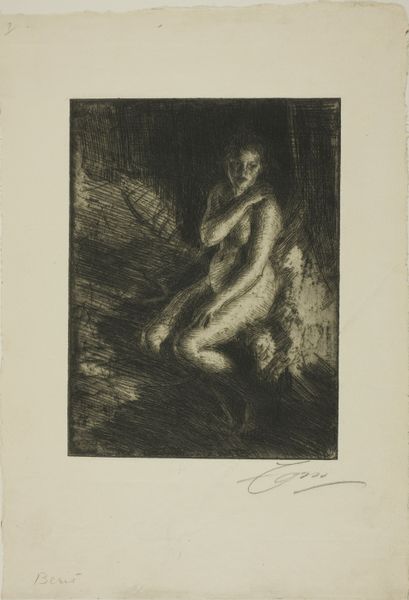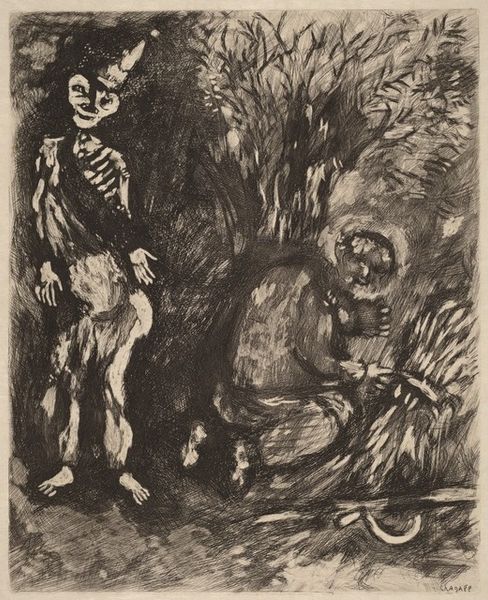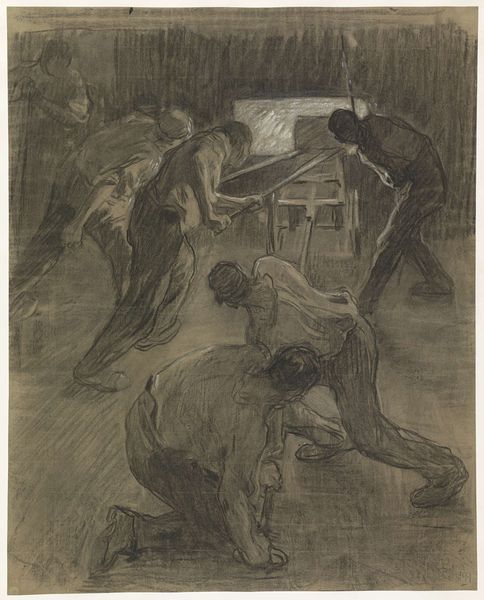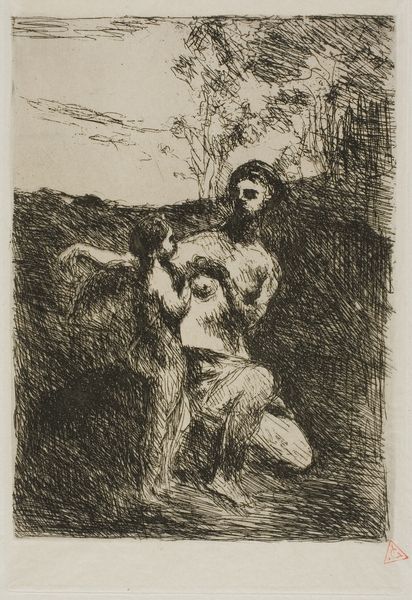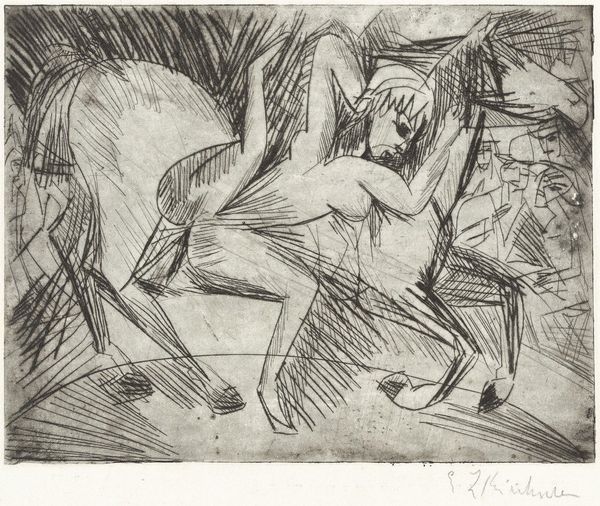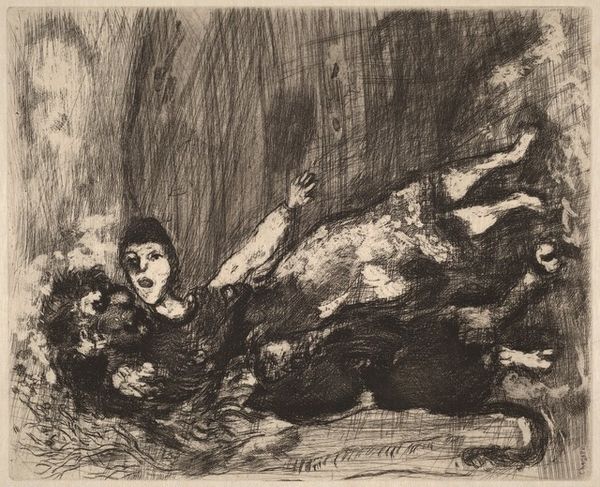
drawing, print, ink
#
drawing
#
ink drawing
# print
#
figuration
#
ink
#
line
#
history-painting
Dimensions: plate: 24.8 x 20 cm (9 3/4 x 7 7/8 in.) sheet: 42.5 x 31.5 cm (16 3/4 x 12 3/8 in.)
Copyright: National Gallery of Art: CC0 1.0
Editor: Here we have Jan Konupek’s “The Raising of Lazarus” from the 1930s, created using ink. The composition has a striking intensity and the contrast is really powerful. What can you tell me about the materials and context? Curator: Let’s look closely at the artist’s hand – the deliberate use of ink and printmaking. Konupek chose these methods, historically more aligned with mass production and illustration, for a biblical scene. Why subvert the expected grand oil painting for something more akin to popular imagery? Editor: So, the choice of ink and print transforms it into something accessible, challenging the conventions of traditional religious art? Curator: Exactly. Think about who the audience might be for such a piece. Is it intended for a wealthy patron or a broader, perhaps working-class, viewership who would connect with printed media? How does this relate to social justice movements of the period, where religion intersected with calls for equality and challenging traditional hierarchies? The act of reproducing the image, making it more widely available, mirrors the Christian message of universal salvation. Editor: That makes so much sense. I hadn't thought about the printing process democratizing the image in a way. So, it is not just about the depicted resurrection, but about a "resurrection" of art itself for a wider audience, making art relatable, tangible... Curator: Precisely! Consider, too, the artist's labor involved in the printmaking. Every line etched or drawn contributes to the overall meaning, making visible the human effort involved in both creating and distributing the religious narrative. It makes you wonder what materials and which forms are deemed as ‘high art’ and why? Editor: This really shifts my perspective. I was so focused on the religious narrative; I had failed to think about how it can be more complex because of the way it was crafted. Curator: Considering the materials brings to light those questions of value, labor, and accessibility and lets us interpret familiar themes through the lens of social production.
Comments
No comments
Be the first to comment and join the conversation on the ultimate creative platform.

